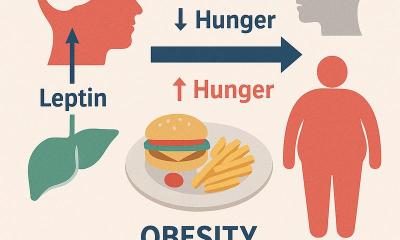Healthy gut flora could prevent obesity
Poor gut flora is believed to trigger obesity. In the same way, healthy gut flora could reduce the risk. This has shown to be the case in tests on rats. Daily intake of a lactic acid bacteria, which has been given the name Lactobacillus plantarum HEAL19, appears to be able to prevent obesity and reduce the body’s low-level inflammation.

“Rats who were given this specific lactic acid bacterium from their time in the uterus up to adult age put on significantly less weight than other rats. Both groups ate the same amount of high-energy food”, explains Caroline Karlsson, a researcher in food hygiene at Lund University.
Ms Karlsson also observed that the rats which were given lactobacilli had a richer and better composition of the bacteria which occur naturally in the intestines. A healthy gut flora should contain a large proportion of ‘good bacteria’, such as lactic acid bacteria, in order to keep the inflammation-causing bacteria in check.
A third group of rats were given the inflammation-causing Escherichia coli bacteria in their drinking water, in addition to the same high-energy food as the other rats. The E. coli supplement led to changes in gut flora and increased body fat. The findings were published recently in the British Journal of Nutrition and form part of the doctoral thesis that Caroline Karlsson recently presented.
In another study, Caroline Karlsson has studied the first faeces of 79 children born vaginally. A foetus lives in a sterile environment and therefore has no micro-organisms in its intestines, but during birth the baby swallows the lactobacilli that are naturally present in its mother’s vagina.
“It had not previously been shown that all newborn babies born vaginally have lactobacilli in their gut flora as early as two days after birth. Thanks to the application of a gene-based technique, we have been able to show in our study that this is in fact the case”, says Caroline Karlsson, who also found that babies with high birth weight had more inflammation-causing bacteria, such as E. coli, in their intestines than babies of normal weight.
A healthy gut flora at an early stage appears to play a part in children’s wellbeing later in life. This is a conclusion in a further study, where Caroline Karlsson showed that children with allergic eczema at the age of 18 months had a lower diversity in the gut flora when they were just one week old compared with the children who did not develop allergic eczema.
In the aforementioned study on rats, it emerged that the mother’s diet and bacteria consumption affect the development and health of her young.
“A number of female rats were given food with high energy content during pregnancy and while they were suckling their young. We saw that, at two weeks of age, the young whose mothers were given high-energy food had higher body weight and more fat in their bodies, as well as higher levels of inflammation, than young whose mothers were given a more balanced diet”, explains Caroline Karlsson.
The research was financed by Formas.
26.05.2011











